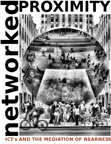
Networks and Social Change
The third of Mills� criteria specified the necessity to transform opinions into action even against, if necessary, the prevailing system of authority. Although a thorough examination of the relationship between technology, agency, power and social change is beyond the scope of this study, I would like to make some general observations regarding the potential for using networks to promote social change. This attempt is relevant because if, as Mills (1956) suggests, a mass cannot really claim the agency to contest the prevailing authority, then to the extent that networked ICT�s are said to transform publics into masses, they can be said to stand in the way of authentic social change.
At the center of this issue are the ways in which networks in capitalist societies commodify social participation. Borgmann (2004), for instance, rightly points out that commodification is the distinguishing feature of the online social interactions that networks make possible. "To commodify something economically is to pull something that is outside of the market into the market" (p. 64), or in other words, to transform things with no monetary value into things with monetary value �or commodities� through their subordination to the logic of capitalism. Borgmann suggests that the commodification of the social happens when a social practice is taken out of its localized context and offered in a re-packaged format online. Thus, chatting becomes online chatting, dating become online dating, etc. Borgmann attempts to establish that networked sociality robs communities of their original meaning and commodify the cultural production of social space:
The Internet is culturally commodifying by its nature. It frees us from the limitations of space and time... What happens in fact is that commodification reduces ourselves and those we encounter on the Internet to glamorous and attractive personae. Commodification becomes self-commodification, but shorn of context, engagement and obligation, of our achievements and failures, of our friends and enemies, of all the features that time has engraved on our faces and bodies�without all that we lack gravity and density. (p. 64)
Continue reading "Networked Proximity - Section 5" » [blogged by ulises on ideant]

